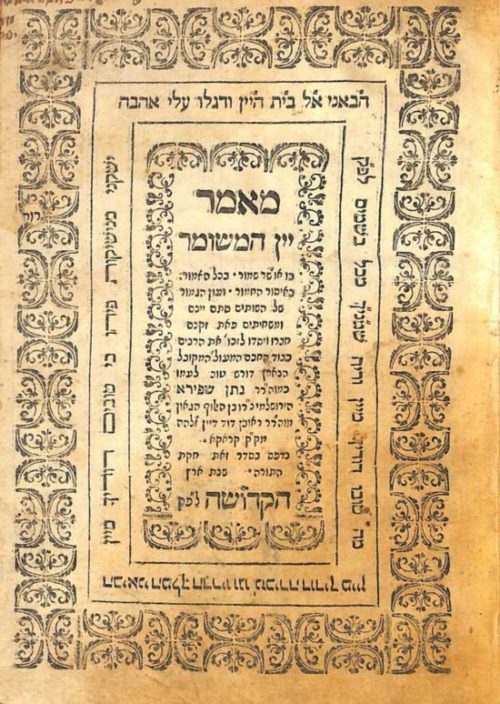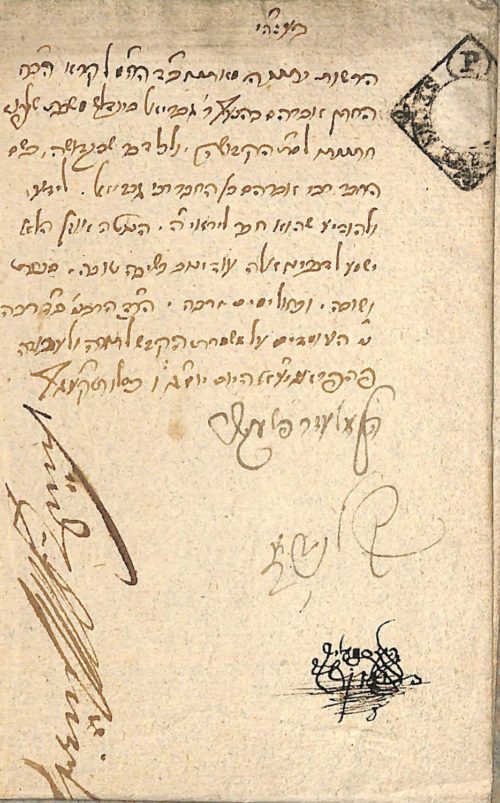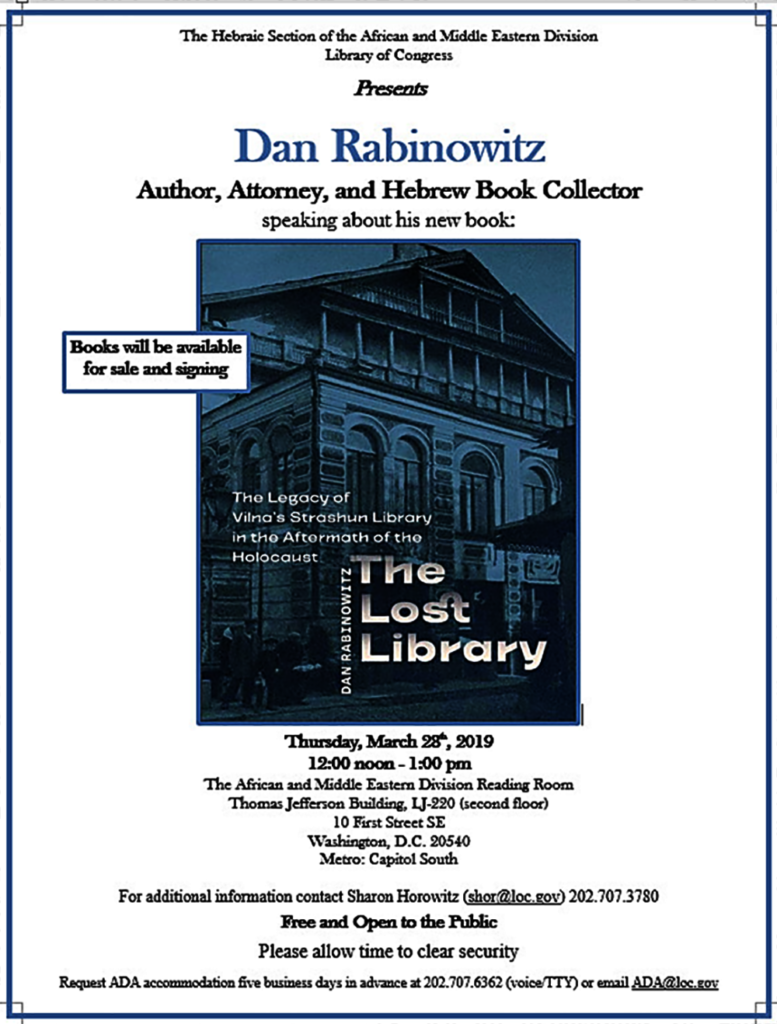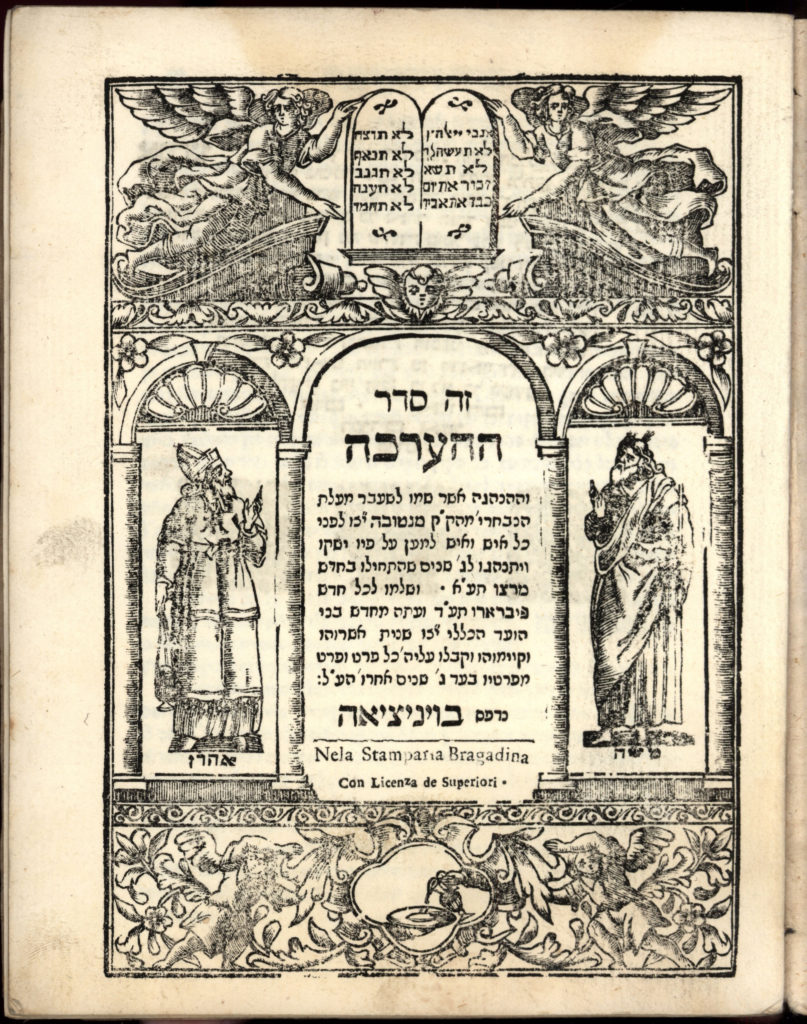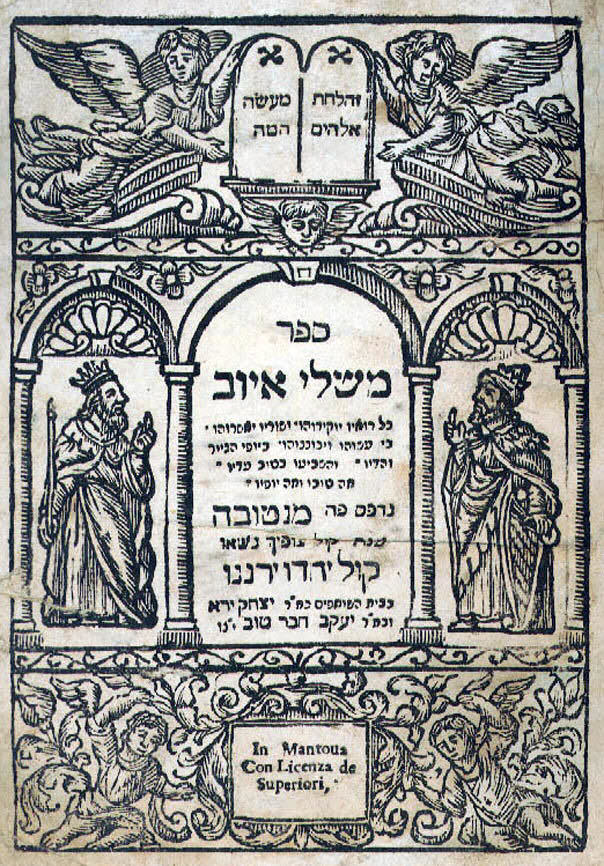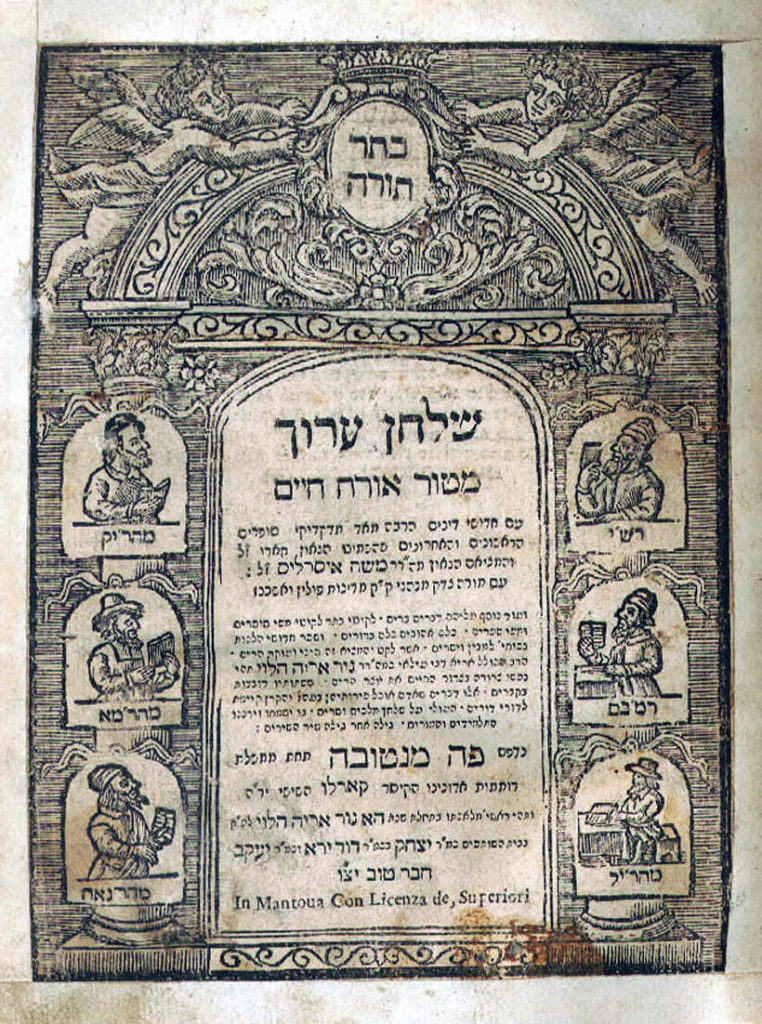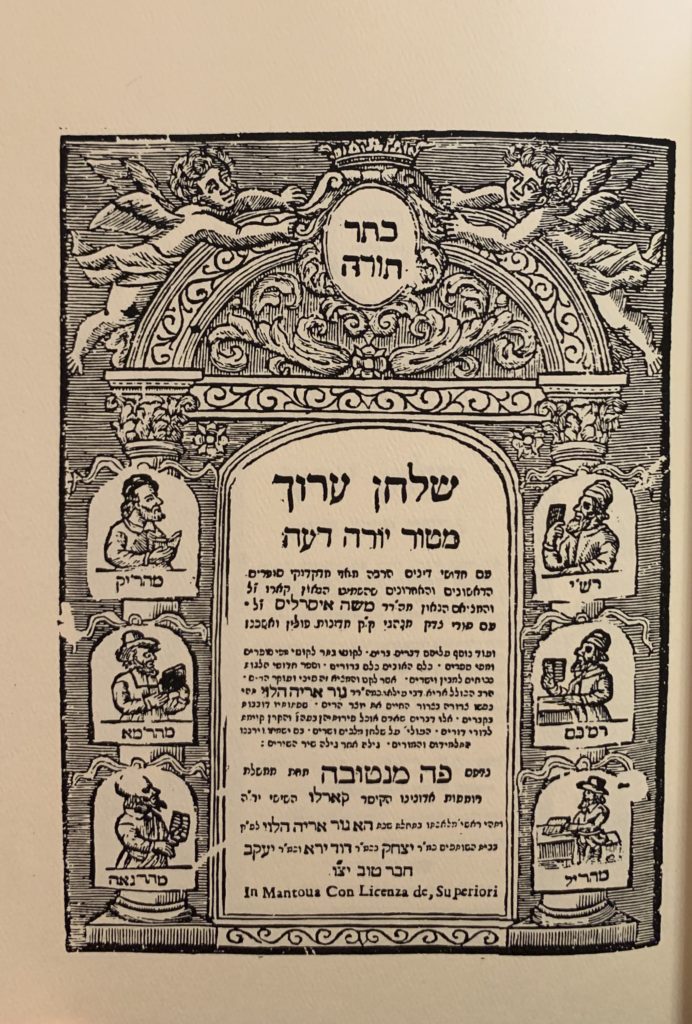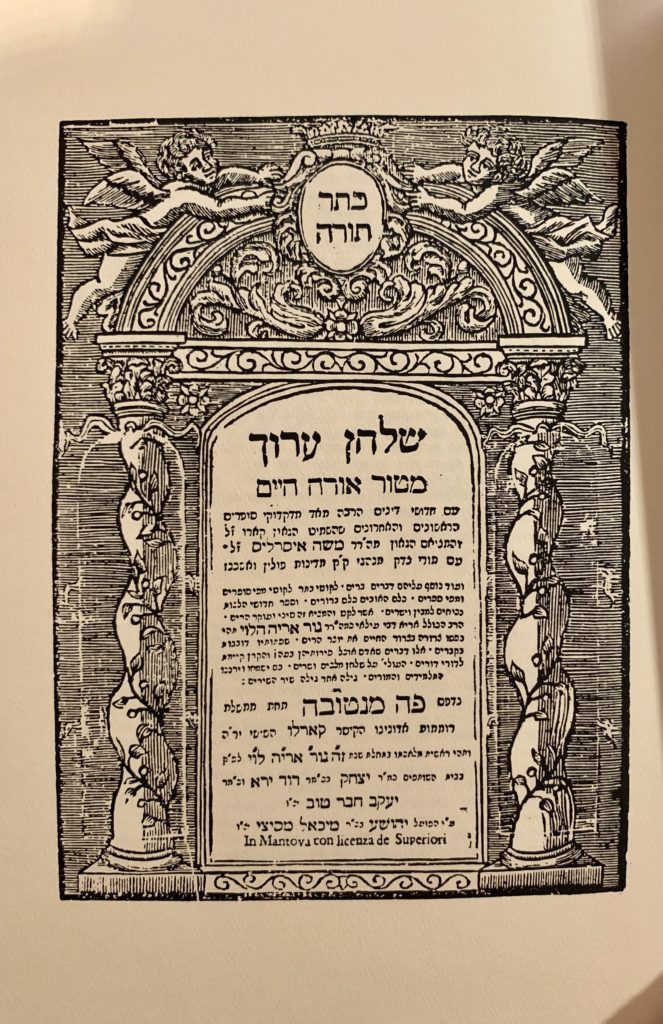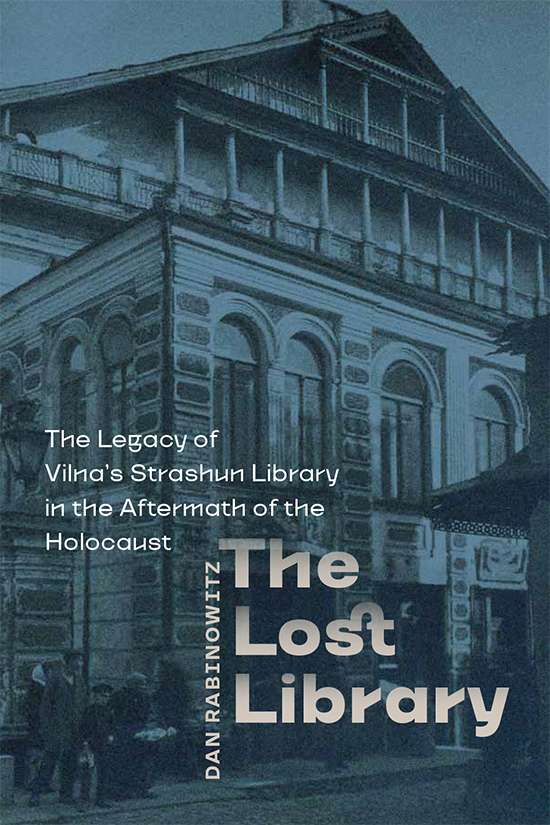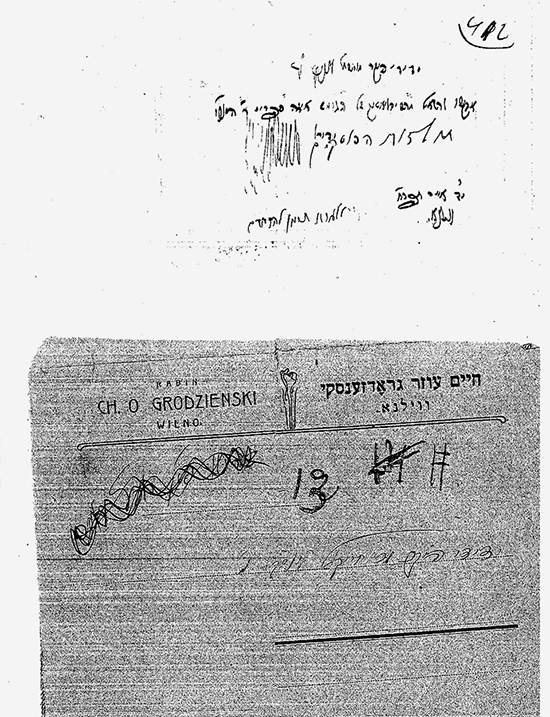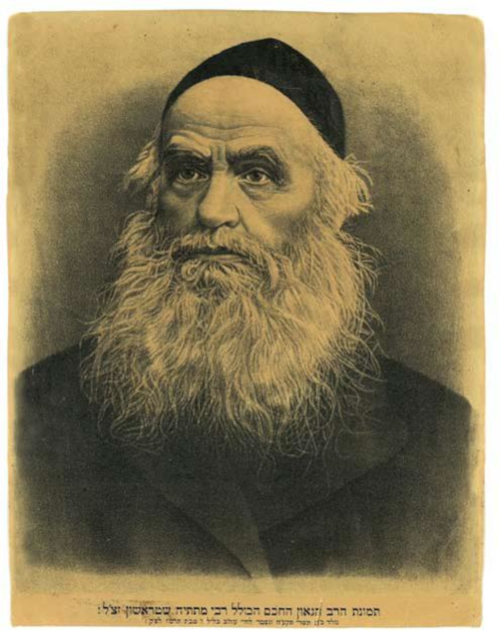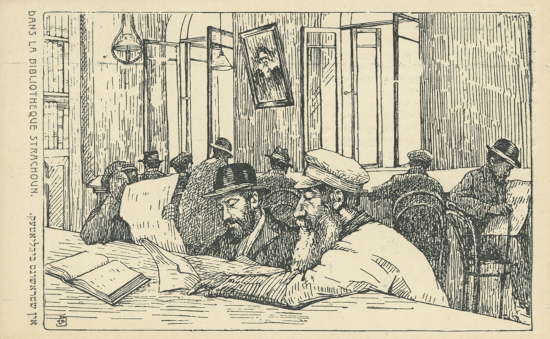שלמה זאב פיק
מחבר ספר “אהבת שלמה”
הנשר הגדול
לקראת יום פטירתו של הרמב”ם בכ’ טבת, רציתי לברר מניין הביטוי “הנשר הגדול” ביחס לרמב”ם, מתי התחילו להשתמש בו, ואם כינוי זה מצוי רק ברמב”ם בלבד. אחרי שחקרתי את הנושא וכתבתי רשומות ידידי הרב ד”ר רועי ז’ק הפנה את תשומת לבי למאמרו של ד”ר מיכאל ריגלר, “‘הנשר הגדול’ – גלגולו של כינוי כבוד”, המעין, תמוז תשס”ו [מו, ד], עמ’ 68-73, שכבר עמד על הרבה מן המקורות שהובאו להלן.
הנשר הגדול – הרמב“ם
כשיצאתי לברר עניין זה, מיד הגעתי למאמרו של הרב טוביה פרשל ז”ל, שהתפרסם בעתון “הצופה”, י”ד שבט תש”ן1:
ב”עוללות” שלו (“הצופה”, א’ בטבת) כותב ר’ דוד תמר כי הוא נשאל מיהו הראשון שקרא לרמב”ם, “הנשר הגדול” ומשום מה נקרא כך.
יורשה לי להעיר כי תואר זה לרמב”ם נמצא בהקדמתו של רבי יום טוב ליפמן הלר לפירושו למשנה (“תוספת יום טוב”): “הנשר הגדול הרמב”ם”.
וכמה דורות לפניו, כותב רבי יוסף יעבץ, מגולי ספרד, בפירושו לאבות (פרק ד’, על המשנה “רבי צדוק אומר”): “הנשר הגדול בעל הכנפים הרמב”ם ז”ל”. אינני יודע אם זו היא הזכרתו הראשונה של התואר, אך היא בוודאי אחת הקדומות.
“הנשר הגדול” כבר נמצא בתנ”ך (יחזקאל פרק י”ז). שם הוא מסמל מלך גדול ועצום. לקחו את השם והשתמשו בו לגבי מלך גדול במלכות התורה. נאה הוא הכינוי. הנשר “מלך שבעופות” (חגיגה יג, ב). גדול וחזק הוא, מגביה עוף ומרחיק ראות. מלכים בחרו בו כסמל לשלטונם. בדומה לכך השתמשו חז”ל ב”ארי” – מלך החיות – לכנות חכם גדול (ארי עלה מבבל, ארי שבחבורה, אין משיבין את הארי לאחר מיתה, ועוד).
אוסיף עוד כי רבי יעקב בן הרא”ש מתאר בהקדמתו לפירושו לתורה (פירוש בעל הטורים) את רבי משה בן נחמן כנשר: “…. לרב הגדול הרמב”ן ז”ל גדול הנוצה ורב כנפים” (השווה תיאורי הנשר ביחזקאל שם).
תוספת:
עיינתי בביבליוגרפיה של דפוסי “משנה תורה” שפירסם ישראל יעקב דינסטאג בספר היובל לכבוד יצחק קיוב (ניו-יורק, תשי”ב) ובה מובאים דברים משערי המהדורות השונות, ונוכחתי לדעת כי התואר “הנשר הגדול” מופיע בראש הרבה דפוסים של “משנה תורה”, החל מן הכרך השני של ההוצאה שנדפסה בווניציה בשנת רפ”ד.2
פירושו של ר’ יוסף יעבץ למסכת אבות שהזכרתי במאמרי נכתב לפני הופעת החרצאה הנ”ל.
מקור הביטוי הוא בספר יחזקאל יז, ג: וְאָמַרְתָּ֞ כֹּה־אָמַ֣ר׀ ה’ יְקֹוִ֗ק הַנֶּ֤שֶׁר הַגָּדוֹל֙ גְּד֤וֹל הַכְּנָפַ֙יִם֙ אֶ֣רֶךְ הָאֵ֔בֶר מָלֵא֙ הַנּוֹצָ֔ה אֲשֶׁר־ל֖וֹ. ובמדרשים הכוונה היא ל מלך בבל או לאחשוורוש:
במשנת רבי אליעזר פרשה ו עמוד 110: “מה הוא הנשר הגדול, זה נבוכדנצר”. ובספרי דאגדתא על אסתר – מדרש פנים אחרים (בובר) נוסח א פרשה א:
[ג, יב] ויקראו סופרי המלך. ויכתב ככל אשר צוה המן. וזוהי אגרת שכתב המן האגגי ושלח לכל ממלכות הארץ, ולכל גדולי אומות העולם, להרוג ולאבד כל ישראל. כתבתי אני גדול המלך ושני לו, ראש לסגנים ושביעי לסריסים, ומובחר שבגדולי המלכות, הסכמתי אני וכל (אפריסין) [אפרכין] וכל שרי המלך ופחות וסגנים, וכל מלכי בני קדם והאחשדרפנים, הוסכמנו כולנו בעצה אחת, בפה אחד ובדבור אחד ולשון אחד, כתבנו מרשות המלך אחשורוש, וחתמנו בטבעתו, שלא להשיב על עסק הנשר הגדול, שהיה כנפיו פרושים על כל העולם כולו, ולא היה עוף בהמה וחיה יכולין לעמוד בפניו, עד שבא הארי הגדול והכה את הנשר מכה גדולה, ונשברו כנפיה, ונמרטו אגפיה, ונתקצצו רגליה, ונעשה כל העולם כולו בנחת בשלוה והשקט, מיום שנדדה מקינה עד היום הזה…
הרב פרשל הביא את דברי רבי גרשון שאול יום-טוב ליפמן הלוי הלר ולרשטיין (ה‘של“ט 1579 – ו‘ באלול ה‘תי“ד 1654), בעל תוספות יום טוב, שכתב בהקדמה למשנה: “כדרך חיבור הנשר הגדול הרמב”ם ודומיו” וכן כתב: “ונשוב אל הכוונה שהנה מדת המשנה שעליה אמר רבינו הקדוש הוי רץ. לא היתה אלא למשנה עצמה כמות שהוא. אבל כאשר קם הנשר הגדול הרמב”ם ופירשה.”
בערך באותו זמן, הרב שלמה בן הרב ישועה עדני (1567 בצנעא, תימן – לאחר שנת 1624 בחברון, ארץ ישראל), התשמש באותו ביטוי בהקדמה לספרו מלאכת שלמה: “ובחבור הנשר הגדול גדול הפוסקים”.
הרב פרשל כבר העיר שבערך 150 שנה לפני כן השתמש רב יוסף יעב”ץ, הידוע בכינויו החסיד יעב”ץ, (בסביבות ה‘ר‘ 1440 – ח‘ באדר רס“ח 1508) בביטוי זה בפירוש לאבות, פ”ד, מ”ז, על דברי רבי צדוק שם. הדפוסים הראשונים באטליה שהשתמשו בביטויים אלו הודפסו בערך 15 שנה אחרי פטירתו של החסיד יעב”ץ באיטליה. האם הביטוי משקף הערצה מצד חכמי איטליה?
בכל מקרה, מצאתי, וכבר עמד על זה ד”ר ריגלר במאמר שלו הנ”ל, התייחסות לרמב”ם כנשר הגדול בערך 250-300 לפני פירושו של החסיד יעב”ץ למסכת אבות. בחיי שהרמב”ם, ר’ מאיר הלוי אבולאפיה (רמ”ה) חלק בתקיפות רבה נגד שיטת הרמב”ם בתחיית המתים ויצא כנגדו ברבים. הוא כתב מכתבים ללוניל בפרובינציא (דרום צרפת של היום) לר’ יהונתן מלוניל. אולם, ר”י מלוניל לא השיב לו, אלא הרב אהרן ב”ר משולם (ב”ר יעקב) השיב לרמ”ה. הרמ”ה השיב לו, ואח”כ פנה לחכמי צרפת הצפונית, לבעלי התוס’, ור’ שמשון שאנ”ץ השיב לו. אח”כ הרמ”ה ערך ופרסם כל האגרות עם הקדמה בערבית ודברי קישור בין המכתבים, תחת השם כתאב אלרסאיל.3 והנה, באגרת המוסר של בתשובה הראשונה של ר’ אהרן מלוניל, הוא מתייחס לרמב”ם כך (סימן כא במהד’ הילמן, עמ’ כב):
כי על הנשר הגדול גדול כנפי חכמה ותושיה, ורב הנוצה, בדעת ושכל ומועצה, יקומו יוני גֵאָיוֹת לשבת במארב להכות בצדיה, להשְׁגות ישרים לפוק פליליה, ולהפוך שורק כולו זרע אמת סורי הגפן נכריה.
הרי כשנתיים לפני שנפטר הרמב”ם, ר’ אהרן משתמש עם הביטוי “הנשר הגדול” ביחס לרמב”ם, ומתנגדיו, כלומר הרמ”ה, הוא בגדר יוני גאויות. תיאור זה של ר’ אהרן, משקף איך הרמ”ה תיאר את הערצת ספרו של הרמב”ם בעיני חכמי לוניל באיגרת הראשון שלו בעניין תחיית המתים (סי’ י’ במהד’ הילמן, עמ’ יג): “אף לזאת יחרד לבי וימס בקרבי. בשמעי כי נפלא הספר הזה בעיניכם מאד, באמרכם איש אל רעהו כי יפלא ממנו דבר לאמר הגישה האפוד.”4
מעל ומעבר לשימוש בביטוי זה ביחס לרמב”ם כבר העירו רבנים וחוקרים שגמטריה של “הנשר הגדול” שווה ל”רבנו משה”.
הנשר הגדול ביחס לחכמים אחרים
חכמים לאורך הדורות השתמשו בביטוי “הנשר הגדול” ביחס לחכמים אחרים, הן לראשונים לפני הרמב”ם, בזמן הרמב”ם ואחרי הרמב”ם. חכמים שהשתמשו בביטוי זה כולל גם ראשונים ואחרונים.
ראשית כל, נביא שני מקרים אירוניים לשימוש בביטוי “הנשר הגדול”: הראשון הוא שרבי בכור יצחק נאבארו (נפטר בשנת תקצ”א [1831]), מגדוליה של איזמיר, כתב בלב מבין, הלכות שלוחין ושותפין פרק ב: “הלא הוא הנשר הגדול הרמ”ה בפרישיו לב”ב כתב”. הרי כלפי הרמ”ה ר’ אהרן מלוניל השתמש בביטוי ביחס לרמב”ם! השני הוא הבר פלוגתא המפורסם של הרמב”ם, הראב”ד. והנה רבי שמואל סורנגה שחי ופעל במאה ה – 18 כתב בספרו פרשת הכסף, הלכות עבודה זרה פרק ח: “וכמו כן נמי ראיתי להנשר הגדול ובעל כנפים הראב”ד זלה”ה בהשגותיו ספ”ה מה’ נדרים דהקשה עצמו על זה”.
מתקופת הראשונים מצאנו עוד דוגמאות של שימוש זה. תקופת הראשונים, הריב”ש בשו”ת שלו סימן רעא השתמש בביטוי לתאר אחד מעמיתיו ברבנות אירופה: “ובסבת מחלוקת שהיה בינו ובין מהר”ר יוחנן נר”ו נסע ממקומו שרות שבוייא וילך אל אשכנז אל הנשר הגדול גדול הכנפים מלא התורה אשר לו החכמה, הוא מהר”ם הלוי נר”ו.”5
והביטוי היה בשימוש גם ביחס לריב”ש עצמו, עיין בשו”ת מהרש”ך חלק ג סימן א: “אם כי האמת יראה לכאורה דאם היה מקום לזה החילוק לא הוה משתמיט מניה הנשר הגדול הריב”ש ז”ל.”
המהרי”ל השתמש בביטוי זה ביחס לרבו רבי שלום מנוישטט (נפטר בערך 1413), ראה שו”ת מהרי”ל סימן פט: “שאלתי הנשר הגדול מהר”ש”.
ביחס לראשונים אחרים מצאנו אחרונים שהשתמשו בביטוי זה:
הזכרנו שבעל תוספות יום טוב התייחס לרמב”ם כנשר הגדול. והנה ר’ יום טוב בהקדמה שלו לדברי חמודות ומעדני יו”ט על הרא”ש כתב ביחס לרש”י: “אמנם כן ידעתי בני ידעתי דלא אכשר דרי ואם הנשר הגדול רש”י ז”ל הוצרך לעשות בימיו פירוש על הגמ’ כי בלעדו לא יושג ולא יובן”.
ר’ ישעיה ב”ר שמחה וינר [נולד בשנת תפ”ו (1726). היה רב בפראג. נפטר בשנת תקנ”ט (1798)], כתב בבגדי ישע, סימן קנט, ביחס לרי”ף: “שהרי הנשר הגדול הרי”ף ז”ל אומר דגם לנטילת ידים לא חשיב חיבור”. כך כתב המראה הפנים על הירושלמי, מסכת בבא בתרא, פרק א, דף ב, עמוד ב: “ביותר היה קשה לי על הנשר הגדול הרמב”ן ז”ל”. והרב דוד שלמה הכהן אדלשיין, מחכמי ורשה במאה הי”ט, כתב בסדר הלכה, הלכות יסודי התורה, פרק א: “בוא וראה דברי הנשר הגדול רבינו אלי’ במזרחי על טענת הרמב”ן נגד רש”י בהתחלת התורה בבראשית שהרי צורך גדול להתחיל התורה בבראשית ברא א'”
ר’ יוסף קארו בכסף משנה הלכות ברכות פרק ג כתב:
והעיד ז”ל שלשון זה נשאל בפומבי רבתי של חכמים ושל סופרים ובכללם הנשר הגדול מהרר”י אברבנאל ז”ל בהיותו לומד בישיבת הרב הגדול מהרר”י אבוהב ז”ל ושהרב מהרר”י פאסי ז”ל הגיד לפניהם יישוב זה ויכשר בעיניהם מכל אשר הוגד שם והוא הוא דרך מהר”ר יהודה ן’ שושן ז”ל וגם זה דעת מורי הרב הגדול מהר”י בי רב ז”ל שכתב וז”ל
ר’ יקותיאל זאב זלמן בן יוסף יוזל, מרבני הונגריה במאה הי”ח – י”ט, ושימש כמגיד בעיר קרולי ואח”כ כרב באונסדורף, ושם נפטר בשנת תקע”ח (1818), כתב עמק המלך שלו, הלכות גירושין פרק ג: “אמר הכותב ראה ראיתי את הים הגדול ורחב ידים אשר פעל ועשה הנשר הגדול בעל כנפים גאון עוזינו מהרש”ל ז”ל בספרו ים ש”ש בב”ק בפרק הפרה.”
בשו”ת שאגת אריה (לנכד הב”ח) סימן ב, יש התייחסות לב”ח כנשר הגדול: “וכן פסק ב”י ז”ל סי’ י”ז, וכן פסק אחריו אדוני אבי זקני הרב הנשר הגדול השר וטפסר בישראל הבונה בית חדש, אדוני מ”ו מוהר”ר יואל סירקש ז”ל בספרו…” כך גם התייחסו למהר”י בי רב בשו”ת גינת ורדים חלק אבן העזר כלל ד סימן יב: “ה”ה הנשר הגדול הרב רבינו יעקב בי רב ז”ל סי’ מו”.
יש עוד אחרונים שהשתמשו בביטוי זה לגדולי הדור שקדמו להם:
הגאון רבי יצחק אייזיק שור זצ”ל, גאב”ד יריטשוב, מח”ס מנחה חדשה לקוטי הקמ”ח בית שערים – שערי משפט – בענייני חושן משפט כתב (במוריה, רנה-רנו (שנה כב ג-ד), עמ’ כט):
וראוי כי חכמת אלקים בקרבו, ה”ה מהר”ש לוריא ז”ל, וכבר קבלנו עלינו כל הוראותיו, וכאשר הזהיר עלינו עד מאוד הנשר הגדול אבי התעודה, ארי שבחבורה, המופלג בתורה וביראה, גזע היחוס והמעלה, כבור דודי זקיני מוהר”ר ישעי’ סג”ל הורוויץ ז”ל בס’ של”ה….
החיד”א בשו”ת חיים שאל חלק ב סימן כ, כתב: “גם הנשר הגדול הרשב”ץ ז”ל בתשובה הלזו”.
בקונטרס הספיקות לאחיו של הקצות בהקדמה מצאנו: “זולת הנשר הגדול שבצל כנפיו נחסה הרב הש”ך ז”ל שחיבר בהו ספר מיוחד, והוא יקר ונפלא שמו נאה לו תקפו כהן…”
רבי מאיר מגזע צבי (נפטר בשנת תקס”ט, 1809) כתב בתבואת שמש הלכות גירושין פרק א: “ואני נצר משרשי הש”ך אומר על אדוני זקני תורת אמת היתה בפיהו ועולה לא נמצא בשפתיו שפתי כהן. ונהפוך הוא במחילת כבודו הנשר הגדול בעל פני יהושע זצלה”ה דבריו הם כמעייל פילא…”
בשו”ת חיים שאל חלק א סימן כ, החיד”א כתב: “כי הנשר הגדול חד מן קמיא מכת ראשונה של גדולי רבני אשכנז האחרונים מהר”ם מריזבורק ורבנן סמוכי מהר”י סג”ל ומהר”י וייל ומהר”ר איסרלן”.
בשו”ת שואל ומשיב מהדורה רביעאה חלק א סימן מג, כתוב: “והנה בשנת תרט”ז א’ נח אמרתי לבאר כאן מה שמצאתי בספר זקני הגאון הנשר הגדול מוהר”ל מפראג ז”ל בנתיבות עולם נתיב הלשון פ”ט.”
בשו”ת תורה לשמה סימן לט, מצאנו: “אך אח”כ בא חכם הוא הנשר הגדול רבינו האר”י זצ”ל והגיד ברוה”ק”.
מעניינים דברי בעל הבן איש חי בשו”ת רב פעלים חלק א – יורה דעה סימן נו בקשר לר’ חיים מצאנז: “הנשר הגדול בעל כנפים וכו’, הרב הגאון הצדיק האמיתי מופת הדור מאור הגולה, בוצינא קדישא חסידא ופרישא, קדוש יאמר לו, המפורסם בכל קצוי ארץ נ”י ע”ה פ”ה מהר”ר חיים האבד”ק צאנז וכו’.”
הרבי משה נחום ירושלימסקי (נולד בשנת תרט”ו 1855 – נפטר בשנת תרע”ו 1916, כתב בשו”ת באר משה בנין ירושלים סימן י: “אבל א”צ יען כי גם הגאון הנשר הגדול בעל נוב”י לא רצה לתקוע עצמו בדבר הלכה להתירה בגט המושלש.” ובשו”ת דברי יציב ליקוטים והשמטות סימן קל יש: “והן הן דברי הנשר הגדול ז’ החכם צבי [בסימן ל”ח]”. ובשו”ת אפרקסתא דעניא לר’ דוד ב”ר ברוך קלונימוס שפרבר, חלק ג – אבן העזר סימן רעג כתוב: “ברם דשפר קדמו להחוייא שריותא ע”פ אשר חידש לנו הנשר הגדול מרן החת”ס ז”ל בחאה”ע ח”א סי’ מ”ג ד”ה ועוד נ”ל…” וכן בשו”ת עטרת פז חלק א כרך ג – אבן העזר הקדמה:
ושו”ר בס”ד בזה עוד דברים לרבינו המבי”ט זיע”א [דהוה מדור דעה דרבותינו הקדמונים ראש וראשון לרבותינו האחרונים וכאשר כותב עליו רבינו החיד”א בס’ פתח עינים מס’ שבת (מט ע”א) “האשל הגדול חד מן קמייא הרב המבי”ט ז”ל”, והגרי”ש נתנזון (בהסכמתו להדפסת שו”ת המבי”ט) כתב עליו: גאון עוזינו הנשר הגדול בעל הכנפיים הנורע בשערים שערי ציון המצויינים בהלכה וכו’. ע”ש
גם הקרבן נתנאל מסכת קידושין פרק א כתב כל ביחס לאביו: “[ח] ואף על גב דלא כתיב. בהדיא וע”ז שמעתי יישוב מאדמ”ו הנשר הגדול מרן הגאון מוהרא”ב נ”ע דבספרי דריש…”
עוד כמה דוגמאות:
מגן שאול הלכות איסורי מזבח פרק ד: “ועל זה בא תשובת שני צנתרות הזהב האחד הנשר הגדול החכם השלם כמוה”ר שבתי דוד נ”ע והחכם השלם סו”ה מוהר”ם עזריה נ”ע ושניהם בחדא שיטה אזלין דכבר נשמר מזה.”
כנסת הגדולה הקדמות אורח חיים:
הקדמת בן הגאון המחבר בשיר ושבח אביו מדבר אמר הצעיר והוא נער ישראל בן לאדוני אבי הנשר הגדול בעל הכנפים בישראל יגדול שמו ה”ה כמוהר”ר חיים בנבנשת נר”ו. אפתח פי וארנן ופי ימלא תהלה. לאל רב העלילה. כי לו נאה השבח והגדולה. כמה וכמה כפולה. ואברך את ה’ אשר לו הממשלה. אשר זיכני לראות מלאכת הקודש מפוארה ומהוללה. הספר נותן אמרי שפר. נקרא שמו בישראל. “כנסת הגדולה”.
בשיירי כנסת הגדולה הגהות טור אורח חיים סימן תלא:
ב שטה כ’: ומדאורייתא בביטול בעלמא סגי וכו’. נ”ב: אמר המאסף: שמעתי אומרים שנשאלה שאלה בויניציא בעיר גדולה של חכמים ושל סופרים, ובכללם הנשר הגדול הרב החסיד מהר”ר שמואל אבוהב נר”ו,
הערות הגרי”ש אלישיב ליקוטים ברכות פרק ראשון (א)
ולא זו בלבד וכו’. וקשה וכי חסר דוגמאות של סייגים שעשו חכמים לדאורייתא. ומתרץ רע”א בשם זקינו (זקיני הנשר הגדול מוהר”א ברוידא זיע”א)
בעל תבואת שמש הלכות איסורי ביאה פרק טו כתב: “והנה מצאתי את שאהבה נפשי וראיתי שאדמ”ו הנשר הגדול המפורסם מהו’ בעריש זצלה”ה שהיה מרא דאתראי עמד בהלכה זו לבאר דברי רבינו.” בשו”ת דברי ריבות סימן מח: “זהו מה שפירש הנשר הגדול החכם השלם כמו”ר הרב יוסף טייטאצק יצ”ו.”
בשו”ת מהרש”ך חלק א סימן יד:
לכאורה יראה דהוכחות דנדון דידן אלימי וחשיבי טפי מהזכרת שם אביו ושם עירו תרוייהו, ותהיה האשה הזאת מותרת להנשא, אפילו לדברי הר’ ישעיה ז”ל [הנ”ל בשלטי גיבורים] וכל הנמשכים אחר סברתו, לא מיבעיא אליבא דהנהו רבוותא דסבירא להו דבחדא מתרווייהו סגי, דפשיטא דלא גרעי כל הני הוכחות, ולפי מה ששמעתי מאחד מגדולי הרבנים המובהקים שבדורנו נר”ו, שמורנו הרב הגדול מוהררי”ט זצ”ל עשה מעשה בהזכרת שם אביו או שם עירו, הן אמת כי הרב המובהק מהרר”י ן’ לב נר”ו [ח”א סי’ ד וח”ג סי’ ב] כתב שאין דעתו להתיר בהזכרת שם אביו, נגד הר’ ישעיה ז”ל, אולי לא שמע דברי הנשר הגדול מוהררי”ט זלה”ה, ומי הוא זה ואיזה הוא בדורנו זה, אשר לבם כחודו של מחט סדקית, שיוכל להכריע בדברים חמורים כאלה:
בשו”ת מהרח”ש קונטרס עיגונא דאיתתא: “ומ”ש בתר הכי ואפילו ביבשה אם אינו חבול הוא על הדרך שחילק הנשר הגדול מוהר”ר יעקב ן’ נחמיאש זלה”ה דכתיבנא לעיל.” וכן בשו”ת מכתם לדוד חלק יורה דעה סימן נא: “וה”נ החזיקו הרב הגודל והמופלא מוהרר”ש לאנייאדו ז”ל אב”ד שבצובה וחד דעמיה הנשר הגדול הרב המו’ כמוהר”מ אצבאן ז”ל ושאר הרבנים שבצובה”. וכן עוד הפעם בשו”ת חיים שאל [חיד”א] חלק א סימן יא: “הרבנים המובהקים האירו ברקים דייני גולה וסבי דצורה ראשון הוא הרב הכולל מר אחיו מהרד”ך נר”ו והרב המופל’ תפארת ישראל ורבא דעמיה הנשר הגדול הר’ באסאן שפה אחת לכלם קשתם דרוכה.”
השימוש בכינוי “הנשר הגדול” בכתיבה מכתב לרב חשוב
מצאנו שהשתמשו בביטוי זה לתאר רב גדול כשהרעיפו עליו שבחים:
במכתב לבעל שו”ת פנים מאירות, חלק ב, סימן קד, מצאנו:
כל אבקת רוכל רב בנין ואמר כל סותר ובונה בקו השוה וחריפתו ובקיאותו כל לא ישוה ה”ה מורינו ורבינו מוכתר בכתר תורה ונאוה המאי”ר /המאיר/ לארץ ולדרים מתיר אסורים הנשר הגדול היודע לשוט בים התלמוד ובכל הפוסקים חכו ממתקים. נופת מתוקים. שבעתיים מזוקקים. דברי כבושים יוצאים מעתק דעתיקן מפיו נעתק’ כש”ת מוהר”ר מאיר נרו.
כמו כן במכתב לר’ יעקב עמדין בשו”ת שאילת יעבץ חלק ב סימן קכ:
ב”ה בריסק ט”ו שבט תקכו”ל.
ירכיבהו ד’ על במתי ההצלחות. עושה שלום יחזיק במעוזו להשיגו שובע שמחות, קרנות צדיק תרוממנה ירוממהו וינשאהו השת חכמה בטוחות, בנוה שלום יתענג ועל מי מנוחות, ה”ה כבוד אדמ”ו הגאון הגדול החסיד המפורסם הנשר הגדול בעל כנפים יפרוש כנפי רוח בינתו לטמון ואל צפון וסתרי נ”י ע”ה פ”ה כש”ת כמהור”ר יעקב נר”ו לע”ד.
כך במכתב לרב חיים זוננפלד [שו”ת תורת חיים (גרי”ח זוננפלד) סימן קכג]:
איש הגדול כארז בלבנון, שביב הודו כברק שנון, ישמרהו רחום וחנון בפסוח וגנון. מכלול בתורה, בפלפול וסברא כח חכמתו מי ימלל, אין גומרים עליו את ההלל. ונודע שמו בשערים, בחסד ואמת שפתים. ינשא בראש הגבורים, יתגדל שמו לדור דורים. ה”ה הנשר הגדול החכם הכולל כקש”ת כמה”ר יוסף חיים זאננענפעלד נ”י.
מצאנו מכתב בזכור לאברהם, תשנ”ט, מהרב יחיאל מיכל וסרמן זצ”ל, חבר לשכת הרבנות, חולון, בעניין טבילת אשה כשיש לה גבס, שכתב: “כבור רבינו גאון דורינו הנשר הגדול שר התורה ארי שבחבורה כל ר ליה נהורא, ה”ה הרב הראשי הרב הרצוג (שליט”א) [זצ”ל]”.
הגדיל לעשות ר’ מנשה קליין בספריו:
שו”ת משנה הלכות חלק ב סימן לט
אל הנשר הגדול אתו העוז והמשל ממשלת שתים תוי”ש רב הרבנים גאון עוזנו טהור גברא חסידא ופרישא ענו וצדיק מאור הגולה פ”ה נר ישראל שבחו מי ימלל אין גומרים עליו להלל וכ’ ה”ה כקש”ת מוה”ר יונתן שטייף מלפנים ראב”ד דק”ק בודאפעסט במדינת אונגארן כעת רב דקהל עדת יראים נ”י הי”ו עד בגצ”א (זצלה”ה).
וכן אליו בשו”ת משנה הלכות חלק ב סימן מא.
בשו”ת משנה הלכות חלק ב סימן מח כתוב:
יום ד’ לסדר עלה נעלה וירשנו אותה לפ”ק תשי”ח ברוקלין נ”י.
אל הנשר הגדול אתו העוז והמשל ממשלת שנים תוי”ש רב הרבנים האי גאון וחסיד מתלמידיו של אהרן המפורסם בתוך עם אנכי יושב שמו מפארים ידיד ד’ וידידי כש”ת מוה”ר פנחס עפשטיין שליט”א ראב”ד לעדה החרדית בעה”ק ירושלים תובב”א.
וכן אליו בשו”ת משנה הלכות חלק ב סימן נ; וכן בחלק ג, סימן קסה:
בשו”ת משנה הלכות, חלק ב, סימן סו, הוא כתב:
ב”ה ה’ לסדר טהרות תשט”ז פה ברוקלין נ”י יצו”א. אל הנשר הגדול אתו העוז והמשל ממשלת שתים תוי”ש שמו הולך מסוף העולם ועד סופו גאון וצדיק חסיד ועניו וכו’ ה”ה ידידי הרה”ג כקש”ת מוהרי”א הענקין שליט”א.
ובשו”ת משנה הלכות חלק ג סימן רב, כתוב:
איסור נותר בפסולי המוקדשין, לינה מועלת בראשו של מזבח אי נפסל הקרבן.
ב”ה. אל הנשר הגדול אתו העוז והמשל, ממשלת שתים תורה וי”ש רב הרבנים גאון יעקב שמו הגדול הולך מסוף העולם ועד סופו לשם ולתהלה בתוך עמי אנכי יושב וכו’ כקהדר”ג מוהר”מ פיינשטיין שליט”א ר”מ תפארת ירושלים.
עוד בשו”ת משנה הלכות חלק ד סימן רטז, כתוב:
כלאי הכרם וכרם של הקדש אי שייך בהו שביעית, ודין הפקר אי הוה אפקעתא דמלכא
ב”ה שלש עשרה מדות הרחמים התשכ”ב ברוקלין נ”י יצו”א.
מחיי חיים יחתם לחיים ארוכים טובים את כבוד האי גאון ישראל זקן שבסנהדרין פ”ה ע”ה דזיו ליה כבר בתיא חכם חרשים הנשר הגדול כהדרג”ק מוהרי”ז מינצבערג (שליט”א) זצ”ל מרא בארעא דישראל עבגצ”א.
כך כתב גם בשו”ת משנה הלכות, חלק א, סימן יד, לאמו”ר מליובאוויטש:
ב”ה יום שנכפל בו כי טוב ד’ מרחשון תשי”ז פה ברוקלין נ”י יצו”א
אל הנשר הגדול דזיו לי’ כבר בתי’ הרב הגאון האי חסיד ועניו שמו מפארים סיני ועוקר הרים שמו הולך מסוף העולם ועד סופו וכו’ כקש”ת מוהרמ”מ שניאורסאהן שליט”א אדמו”ר מליובאוויטש
וכך כתב אליו בשו”ת משנה הלכות, חלק ד, סימן קנט; ובחלק יד סימן רנג.
שם המשפחה “אדלר” הנשר הגדול
השם המשפחה “אדלר” פירושו נשר בגרמנית וביידיש. ממילא כל רב ששם משפחתו הוא אדלר קיבל את הכינוי “הנשר הגדול” בין אם הוא אכן היה נשר גדול ובין אם לא. המפורסם ביניהם, ואכן היה מגדולי הדור, הוא רבי נתן אדלר זצ”ל. לכן מצאנו ביחסו בכל מיני ספרים הביטוי “הנשר הגדול” ביחס אליו:
כמובן הראשון הוא החת”ם בעצמו בשו”ת חתם סופר חלק ב (יורה דעה) סימן קסז:
תיתי שלמא רבא מן שמי’ וחיים לאמ”ו הגאון המפורסים בכל קצוי ארץ וים רחוקים דולה מים מבורות עמוקים בנו ממנו חרבות עולם מוסדי דור ודור יקים כושל יקימון מיליו מדבש ונופת מתוקים מפומי’ דמר נפקין זקוקין דנורא נחמדים מזהב ומכסף מזוקקים ה”ה הכהן הגדול תורה נבקש מפיהו משפטים וחוקים הוא המורה המרווה צמאון צחיחים כמים על אפיקים נ”י ע”ה פטיש החזק כראי מוצקים כק”שת מהו’ נתן מר כהן צדיק על החסידים ועל הצדיקים הוא הנשר הגדול המרחף על גוזליו תלמידיו הותיקים כנפי יונה נחפה בכסף ואברותיה ירקריקים ואנא מן זעירא לא מן תיישים אלהין מגדיים דקיקים נקטינא בשיפולי גלימא ואחוינא קידה והשתחוי’ בתוך הבאים לפני אמ”ו הגנ”י בשנים ושלשה גרגרים גם אני בחלומי חזיתי חזות קושי’ ופירוקא ודברים שצריכים לפנים להגישו אל הכהן העומד לאורים להאר עינינו ולהגיה חשכנו ה’ ישמרהו ויחייהו יאושר עיניו בארץ נכוחות וישבע שובע שמחות ובחסדו נקוה ירוה צמאונינו במי מנוחות ישיבנו תשובה נכונה מכתב אלקי’ חרות על הלוחו’ ואנחנו נקטוף מלוחותיו עלי שיח שפתותינו ומהם נשים חכמה בטוחות וזה החלי בשם אלקי הרוחות.
וכן הוא בשו”ת שואל ומשיב מהדורה תליתאה חלק ג סימן פז (ב):
ובכל זאת לבי מהסס וישאל עוד את כבוד הרב הגאון מוה’ יוקב עטלינגער ני’ אבד”ק אלטונא ואת הנשר הגדול הרב מוה’ נתן אדלער נ”י אבד”ק לאנדאן ואם יסכימו עמי נמטי שיבא מכשירא והי’ בזה שלום מאת הדו”ש:
רבי יששכר שלמה ב”ר יצחק טייכטל כתב בשו”ת משנה שכיר חלק אורח חיים סימן מה:
על כן היה נראה לדעתי, לעשות בזה כעין הכרעה, וכפי ששמעתי מרבינו ההפלא”ה שהיה לוי ומרנא ר’ נתן אדלער היה כהן, וכשהגיעה השעה לעלות לדוכן הביא השמש הכלי עם מים למקום מושבו של רבינו [בעל] ההפלאה, והכהן הנשר הגדול הלך אליו למקום [בעל] הפלאה, וכה יצק [בעל] ההפלאה על יד מרנא ר’ נתן אדלער ז”ל. על כן לדעתי גם כבודו ינהג כן, שהכהנים יבואו אצלו אל מקומו לקבל ממנו המים על ידיהם, ובזה יהיה יוצא ידי שניהם, שיהיה היכר בין כבוד תורתו לשאר הלויים, וגם בזה דהם יבואו אליו יכירו שכבודו גדול מהם, וגם יקיים מצות יציקה על יד הכהנים, ולא יחלש המצוה זו אצלם, ויתוסף גם על ידו קדושה על קדושתם, כן נלע”ד.
וכן הוא דף על הדף שבת דף קנג עמוד א: “בספר הזכרון דרך דוד (ע’ נג) מביא: החתם סופר בהספידו את מורו ורבו הנשר הגדול ר’ נתן אדלר זצ”ל אמר בדבריו דבר נפלא ונורא.” וכן בעלי תמר שבת פרק א: “ויש לציין מ”ש בספר דרך הנשר אות נ”ב שהגאון החסיד הנשר הגדול רנ”א זצ”ל כותב באגרת לר”מ קוניץ… ” ובעלי תמר מועד קטן פרק ג: “ויש לציין בזה דברי החת”ס בתו”מ בפרשת שמיני בהספדו על רבו הנשר הגדול הגאון המופלא רבי נתן אדלר זצ”ל,”
אולם כך נהגו לחכמים אחרים וכמו שכתב ר’ מנשה קליין בשו”ת משנה הלכות חלק יז סימן קצד:
מה עשו הכהנים עם כ”כ הרבה תרו”מ כשנכנסו לארץ
פורים קטן התשל”ו ברוקלין נ”י יצו”א
אל הנשר הגדול, אתו העוז והמשל, זקן שבסנהדרין, יושב בלשכת פלהדרין, רב האי גאון וצדיק פאר הדור חו”פ כקש”ת מוה”ר יוסף אדלר (שליט”א) זצ”ל, אבדק”ק טארדא בירושלים עיה”ק ת”ו.
וכך הוא כתב לאותו רבה בשו”ת משנה הלכות חלק יח סימן מז; וכן הוא בשו”ת משנה הלכות חלק ד סימן יב (אל הנשר הגדול, … מוה”ר יוסף אדלר שליט”א…) וכן בשו”ת משנה הלכות חלק ד סימן רח.
לסיכום, מצאנו שהראשון שהשתמש בביטוי זה היה ר’ אהרן הכהן מלוניל ביחס לרמב”ם, אח”כ מצאנו ראשונים ואחרונים שהשתמשו בביטוי זה ביחס לכל סוגי חכמים, אלו שקדמו להם ובני דורם, אביהם ולכבוד הרב שאליהם כתבו. היה מקום מיוחד לשימוש בביטוי זה לרב ששם משפחתו היה אדלר שפירושו נשר.
[1] הודפס במאמרי טוביה, כרך ד’, ירושלים תשע”ט.
[2] רפד = 1524. המאמר נמצא באוצר החכמה, ראה עמ’ ל-לא על-אודות מהדורה זו. המהדורה השנייה היא משנת ש”י (1550), ראה שם, עמ’ לה-לח.
[3] יחיאל בריל פרסם את הכתב יד בפריז בתרל”א. מהדורה חדשה של הספר הודפס ע”י הרב דוד צבי הילמן ז”ל, בספר זכרון בית אהרן, בני ברק, תשע”ג, תחת השם “אגרות הרמ”ה”.
[4] לעניין הפולמוס וכן התאריכים של האגרות והיחס לדברי הרמ”ה בפירושו למסכת סנהדרין, ראה בספרו (באנגלית) של דב (ברנרד) ספטימוס, Hispano-Jewish Culture in Transition: The Career and Controversies of Ramah (Harvard University Press, 1982), פרק ג’; לאגרות בין רמ”ה לר’ אהרן מנלוניל בפרטף ראה עמ’ 42-46.
[5] על-אודות הנושא הזה והמחלוקת ראה הסיבום בספרו של שמעון שוורצפוקס, יהודי צרפת בימי הביניים, תל-אביב 2001, עמ’ 303-306.
